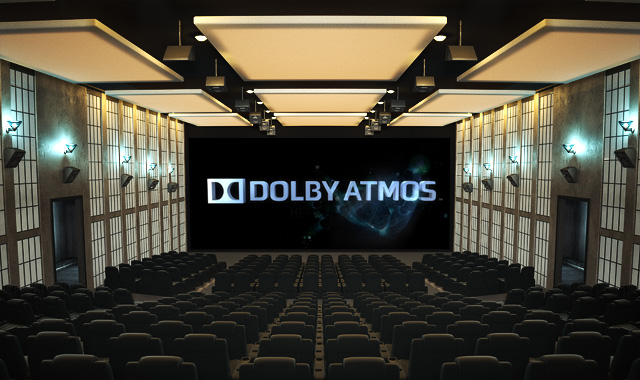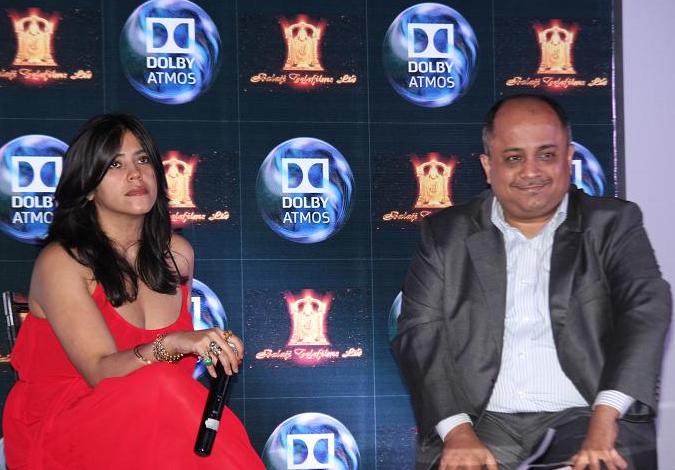Pankaj Kedia has been part of the media, entertainment and visual computing industry for long now, where he has held various key positions in management, sales, marketing, pre-sales, and solutions integration. He has also been instrumental in supporting the growth and development of the visual effects, DI, digital post production, broadcast graphics, and animation industries in India. His goal is to help establish and grow Dolby’s business across diverse market segments, including cinema, broadcast, PC, mobile, consumer electronics, and gaming.
AnimationXpress.com’s Sidharth Iyer recently met up with the super boss at Dolby India and tried to understand his new role in looking after south-east Asia and Australia-New Zealand markets along with India; taking Dolby Atoms to homes; the novel initiative called ‘Dolby Institute; associations with various broadcast, cinema & new media partners and much more.
Excerpts:-
What challenges are you facing in your new role?
I am currently looking after SEA, ANZ and India. In my earlier role, I was more focused on expansion plans for India alone, but in this new role I have a larger market to cater to and also that much more responsibility to bring the best of Dolby to them.
If you actually go to see the markets are very similar, one good thing that’s happening as we speak in the digital transmission of the television consumption in the countries – TV is now progressing from analogue signals to digital ones – Malaysia, Vietnam, Indonesia, Philippines and India are the major markets going through this transition phase right now. Dolby has been very actively involved with the various broadcasters in this stage and the second major change that we are witnessing is the rise of Dolby Atmos. In fact just recently we have inked deals with two major cinema chains in the Indonesia where we have signed up for opening 100 screens each in Dolby Atmos. Cinemax signed the deal in June 2014 and in December 2014 we signed it with the largest chain in the country called Cinema 21 and these screens are planned over a span of 12-18 months, so we are really keen on rolling out faster and more theatre chains with Atmos technology.
 Dolby recently came out with the Atmos at home version, how has it been received?
Dolby recently came out with the Atmos at home version, how has it been received?
I believe our distribution partners have really pushed the Atmos at home message in this region and it has resonated well with consumers alike. We wanted to bring something more for our home viewing audience as we felt nothing was delivering the quality that one deserved to experience from the comforts of one’s home as that if where one would want to just lay back and relax.
I personally have attended many press launches of the Atmos at home experience and each one has only gone onto bolster our belief that we are delivering on the best in sound technology not just for cinema goers but also for those who really want sound to play an integral role in their daily lives.
The content for TV is yet to adapt to the Atmos setting, but that will soon change with consumers demanding better quality of sound for their daily consumption. Currently Atmos at home is only focussed on Blu-Ray and OTT and we have about seven-eight titles globally that support Atmos sound. We recently released the first title in India for ‘Mary Kom’ in Atmos on Blu-Ray.
Share some insights on the plan ahead with Dolby Institute, what can we expect?
The Dolby Institute initiative was launched a couple of years ago globally and it started with mainly two intentions; one being encouraging newer talent and the other was to share the best practices and knowledge on how to optimally use sound for storytelling.
So, there is not just a lot of tech training but also brings in the creative facet to the table. Like it educates on how sound can be used to really portray a scene of grandeur on the silver screen; can sound be used to cut down on production cost; what we are really trying to say is sound can actually be the most inexpensive production tool, which if used well can save a bomb for the producer – be it television or cinema.
Coming back to the Dolby Institute workshops, we conducted the very first series in India fairly recently and it was really just catering to two sets of audiences; in the first leg we visited a bunch of film schools like FTII in Pune and Whistling Woods in Mumbai, where we spoke about the use of sound in storytelling. In the next leg we organised a closed group interaction with a couple of big broadcast networks like Star India, Zee Network and Colors; where we not only interacted with the technical team but also with a few producers on how they should deal and think about using sound better in their respective contents.
 You recently announced partnering with Balaji Motion Pictures, what’s expected?
You recently announced partnering with Balaji Motion Pictures, what’s expected?
We have been working with Balaji since HD television begun even now they have three major shows on Life OK, Colors and Star. On the motion picture side, they have many movies lined-up and generally we have single title commitments, so it’s a good move for the exhibitors, who will now get ready with the plan for this year’s slate.
Is Dolby also going to focus on VOD as a medium?
Globally we have all the top services having Dolby 5.1 and 7.1. There are plans for Dolby Atmos and Dolby Vision on the platforms as well, but it’s too early to comment on them. In the Indian context, OTT and VOD are still in their nascent stages and broadband bandwidths are a major cause of concern for these services to really flourish in the coming years as well.
As the market evolves here and the business models become much clearer – with piracy playing a spoil sport – and it really is the question of when it will happen, because it will and has to happen at some stage going forward.
What role will Dolby play in this edition of The ICC World Cup?
This time around we are very involved in the production side as well, this also being the first time that Star is actively working on the production side on the whole event, our teams are working together. Since this time they are going to be shooting using 4K technology our technology support team will be accompanying them on each location and helping in catching all the ‘sound of the matches’ in HD and surround sound.
We are also working very closely with LG – the global partner of the ICC World Cup – to roll out a never before experienced ‘stadium like’ setting across nearly 500 retail outlets of LG pan-India. The idea is to really set the tone for the biggest sporting event everyone in the country is gearing up for.
What’s Dolby Vision all about?
There are two aspects of Dolby Vision; one is the television side and the other being the theatrical side. On the television side, we recently announced a strategic partnership with Warner Bros. of 25 titles coming on Dolby Vision. And we are also working with big TV manufacturing brands to launch Dolby Vision TV soon.
On the cinema side, we are going to bring Dolby Vision to the Dolby Cinema. We opened the first one in Netherlands and that’s the first completely branded Dolby Cinema; that has Atmos, it has our own unique design of the theatre and it’s just a mindboggling concept altogether with a laser projector. And we should be staring the roll out for that by mid 2015 globally.
At Dolby we have a really strong innovation pipeline and that only cements our belief further of coming up with more ground-breaking and path-changing technology for creating a better and lasting experience for the consumer.
What lies ahead for the M&E space in the coming years?
It’s a high growth market, in broadcast – digitisation is playing an important role for bringing about a revolution in the way content is and will be treated in the coming years; the ARPUs are scaling up; genuine subscriber numbers are going up and the operators are better informed of their customers.
On the cinema end, the number of movies that are accumulating great box-office numbers is an encouraging sign for not just the distributors, producers and exhibitors but also for the whole ecosystem at large. Even consolidation of cinema chains is helping in creating a more balanced and well managed setting and also reducing the number of movies getting pirated.
We are a very unique market as we have such a strong local content ecosystem, which is an asset unlike other markets. And Dolby’s philosophy is to really partner with our customers and be thought leaders in this space bringing the best content for the end consumer.
And finally your thoughts on Ray Dolby being immortalized with a star in the Walk of Fame
It’s truly inspiring and pleasing to see such a great man being honoured for his contribution to not just the world of sound, but pioneering the way technology can be used to even evolve creative minds.
Everything in the company is about Ray Dolby’s legacy, right from the innovation of the technology to his beliefs and ideology. The philosophy of the company and the way he ran it, everything is just so inspiring.
And even though we don’t have him with us, we feel his presence across the company and it’s only befitting that his star is placed right outside the Dolby Theatre, which is that much more special for us as a company.
